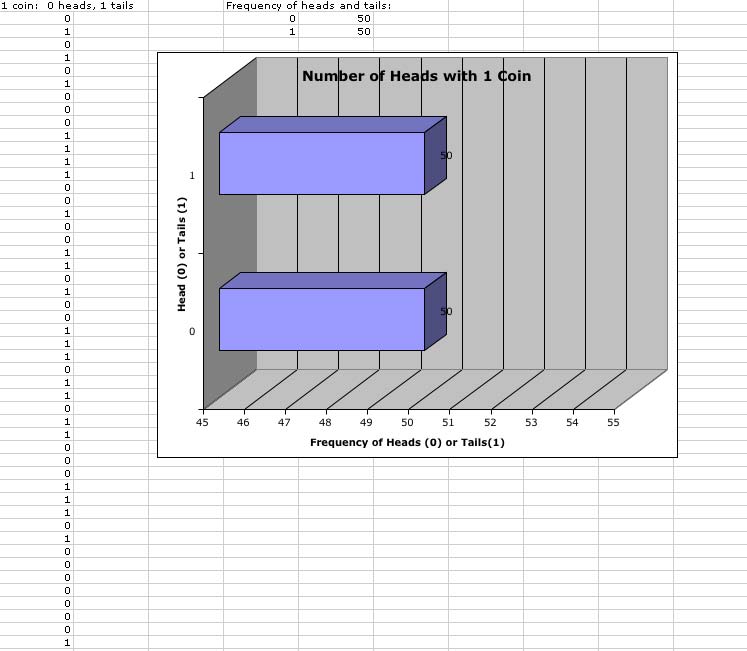
One Coin
Here, I generated the possible outcomes of flipping one coin one hundred times (but I am only showing the first 50 flips due to space reasons). I used Microsoft Excel to randomly select 0 or 1, where 0 means that the coin landed on heads and 1 means that the coin landed on tails. The frequency of heads and tails is how many times (out of the 100 flips) that the coin landed on either heads (0) or tails (1). As you can clearly see, the coin landed on heads 50 times and tails 50 times. If you divide these numbers by 100, you will get that 50% of the flips were heads, and 50% of the flips were tails. These are actually what we would expect to get from flipping the coins.

Probability of Getting Heads:Empirical : .50Theoretical : .50
Let's look at another simulation of the same experiment:
Probability of Getting Heads:Empirical: .53Theoretical: .50